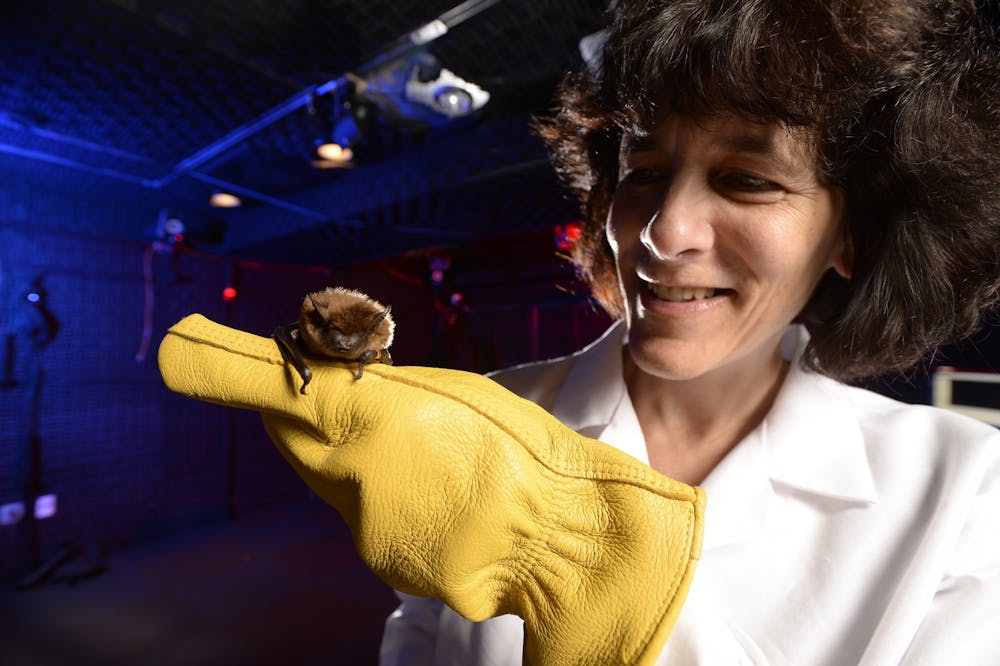Humans are not the only species whose lives have been affected by the coronavirus (COVID-19) pandemic. The National Institutes of Health released a statement earlier this month citing concerns about the care of research animals.
Kim Hoppe, Vice President of Communications, wrote in an email to The News-Letter that animal care staff have attempted to strike a balance between worker and animal safety while ensuring successful research.
“During the COVID-19 pandemic, Johns Hopkins officials are working to preserve the success and integrity of our research mission,“ she wrote.
At the same time, she explained that on-campus research is limited to only the projects that are deemed essential. The directive did not please some researchers. However, a significant portion of their research can be completed at home, according to Hoppe.
“We are encouraging research faculty to focus on activities that can be completed remotely, such as writing papers and grant proposals, and completing data analysis,” Hoppe wrote.
Some designated essential personnel from each laboratory are still necessary to feed the animals and maintain a clean living environment. They are all supplied with gloves, masks and other protective equipment.
“We are [also] requiring that essential personnel designated for each laboratory be responsible for ensuring the health and welfare of our laboratory animals, preserving research projects and data, protecting sensitive equipment and other critical tasks,” Hoppe wrote.
The personal protective equipment is for the animals’ protection as much as the technician’s. A tiger recently tested positive for COVID-19 at the Bronx Zoo. Zoologists noted that an asymptomatic park ranger was likely responsible for transmitting the infection.
However, the administration did not express concern about the potential of interspecies spread.
“Our emergency management experts, clinicians and researchers have extensive experience and training in planning for and dealing with a variety of situations, and we have expanded our existing emergency plans to meet this challenge,” Hoppe wrote.
Animal research has also been critical for modeling of animal behavior. At Hopkins, Professor of Psychological and Brain Sciences Cynthia Moss studies bat behavior. According to Moss, certain species of bats live extraordinarily long, further underscoring the need for humane treatment in the lab.
“We’ve seen big brown bats in the wild that have been tagged, recaught and tagged again over 35 years later,” Moss said.
Scientists have hypothesized that bats served as the initial animal reservoir for the virus that causes COVID-19. In fact, bats have been found to harbor a wide variety of viruses without symptoms. Despite this, Moss still argues that bats are given a bad rap.
“Bats are extremely important to the environment. They’re responsible for spreading seeds and pollinating various crops that are very important for human food supplies. They show a wide range of specializations that might one day open up new avenues for therapy for humans,” Moss said.
Through a variety of precautions, Moss keeps both her students and her bats safe from communicable disease.
“The main disease we really have to worry about is rabies,” Moss said. “Everyone in the lab is vaccinated against rabies. In the off chance that someone is scratched, they immediately get post-exposure shots, just in case.”
Now, since campus operations are stalled, animal care workers and the animal husbandry staff go to the lab every day to feed the bats. Moss explained that since the bats live in large enclosures, they have room to fly and exercise.
As evidenced by policies in the Moss Lab and other labs at Hopkins, ethical treatment of research animals is a non-negotiable requirement, even during the pandemic.
Correction: A previous version of this article referred to Kim Hoppe as the Senior Director of Public Relations and Corporate Communications. Hoppe’s current position is Vice President of Communications.
The News-Letter regrets this error.

















